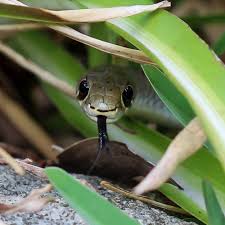Stamp with Collectible Margin: And The Suckling Child Shall Play Over The Hole Of The Asp (Israel 1962)
And The Suckling Child Shall Play Over The Hole Of The Asp (Israel 1962)
05 September (Israel ) within release Festival 1962 goes into circulation Stamp with Collectible Margin And The Suckling Child Shall Play Over The Hole Of The Asp face value 0.43 Israeli lira
| Stamp with Collectible Margin And The Suckling Child Shall Play Over The Hole Of The Asp in catalogues | |
|---|---|
| Michel: | Mi: IL 261T |
| Stamp Number: | Sn: IL 227T |
| Yvert et Tellier: | Yt: IL 223T |
| Stanley Gibbons: | Sg: IL 236T |
Stamp with Collectible Margin is square format.
Also in the issue Festival 1962:
- Stamp with Collectible Margin - And The Leopard Shall Lie Down With The Kid face value 0.28;
- Stamp with Collectible Margin - And The Suckling Child Shall Play Over The Hole Of The Asp face value 0.43;
- Stamp with Collectible Margin - And The Wolf Shall Dwell With The Lamb face value 0.08;
Stamp with Collectible Margin And The Suckling Child Shall Play Over The Hole Of The Asp it reflects the thematic directions:
Animals are multicellular, eukaryotic organisms of the kingdom Animalia (also called Metazoa). All animals are motile, meaning they can move spontaneously and independently, at some point in their lives. Their body plan eventually becomes fixed as they develop, although some undergo a process of metamorphosis later on in their lives. All animals are heterotrophs: they must ingest other organisms or their products for sustenance.
Biologically, a child (plural: children) is a human being between the stages of birth and puberty. The legal definition of child generally refers to a minor, otherwise known as a person younger than the age of majority. Child may also describe a relationship with a parent (such as sons and daughters of any age) or, metaphorically, an authority figure, or signify group membership in a clan, tribe, or religion; it can also signify being strongly affected by a specific time, place, or circumstance, as in "a child of nature" or "a child of the Sixties". There are many social issues that affect children, such as childhood education, bullying, child poverty, dysfunctional families, child labor, hunger, and child homelessness. Children can be raised by parents, by fosterers, guardians or partially raised in a day care center.
A festival is an event celebrated by a community and centering on some characteristic aspect or aspects of that community and its religion or cultures. It is often marked as a local or national holiday, mela, or eid. A festival constitutes typical cases of glocalization, as well as the high culture-low culture interrelationship. Next to religion and folklore, a significant origin is agricultural. Food is such a vital resource that many festivals are associated with harvest time. Religious commemoration and thanksgiving for good harvests are blended in events that take place in autumn, such as Halloween in the northern hemisphere and Easter in the southern.
The New Year is the time or day at which a new calendar year begins and the calendar's year count increments by one. Many cultures celebrate the event in some manner. In the Gregorian calendar, the most widely used calendar system today, New Year occurs on January 1 (New Year's Day, preceded by New Year's Eve). This was also the first day of the year in the original Julian calendar and the Roman calendar (after 153 BC)
Snakes are elongated, limbless reptiles of the suborder Serpentes Like all other squamates, snakes are ectothermic, amniote vertebrates covered in overlapping scales. Many species of snakes have skulls with several more joints than their lizard ancestors, enabling them to swallow prey much larger than their heads (cranial kinesis). To accommodate their narrow bodies, snakes' paired organs (such as kidneys) appear one in front of the other instead of side by side, and most have only one functional lung. Some species retain a pelvic girdle with a pair of vestigial claws on either side of the cloaca. Lizards have independently evolved elongate bodies without limbs or with greatly reduced limbs at least twenty-five times via convergent evolution, leading to many lineages of legless lizards. These resemble snakes, but several common groups of legless lizards have eyelids and external ears, which snakes lack, although this rule is not universal (see Amphisbaenia, Dibamidae, and Pygopodidae).






